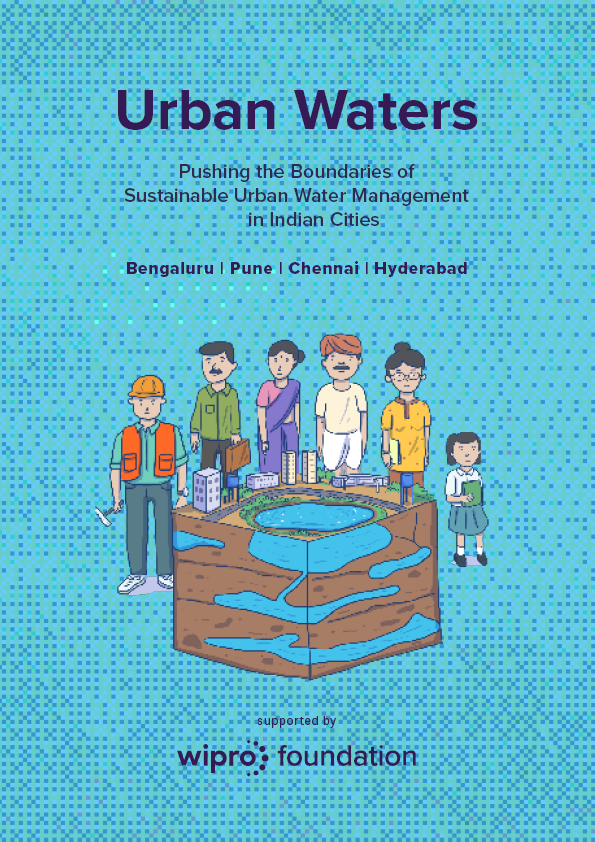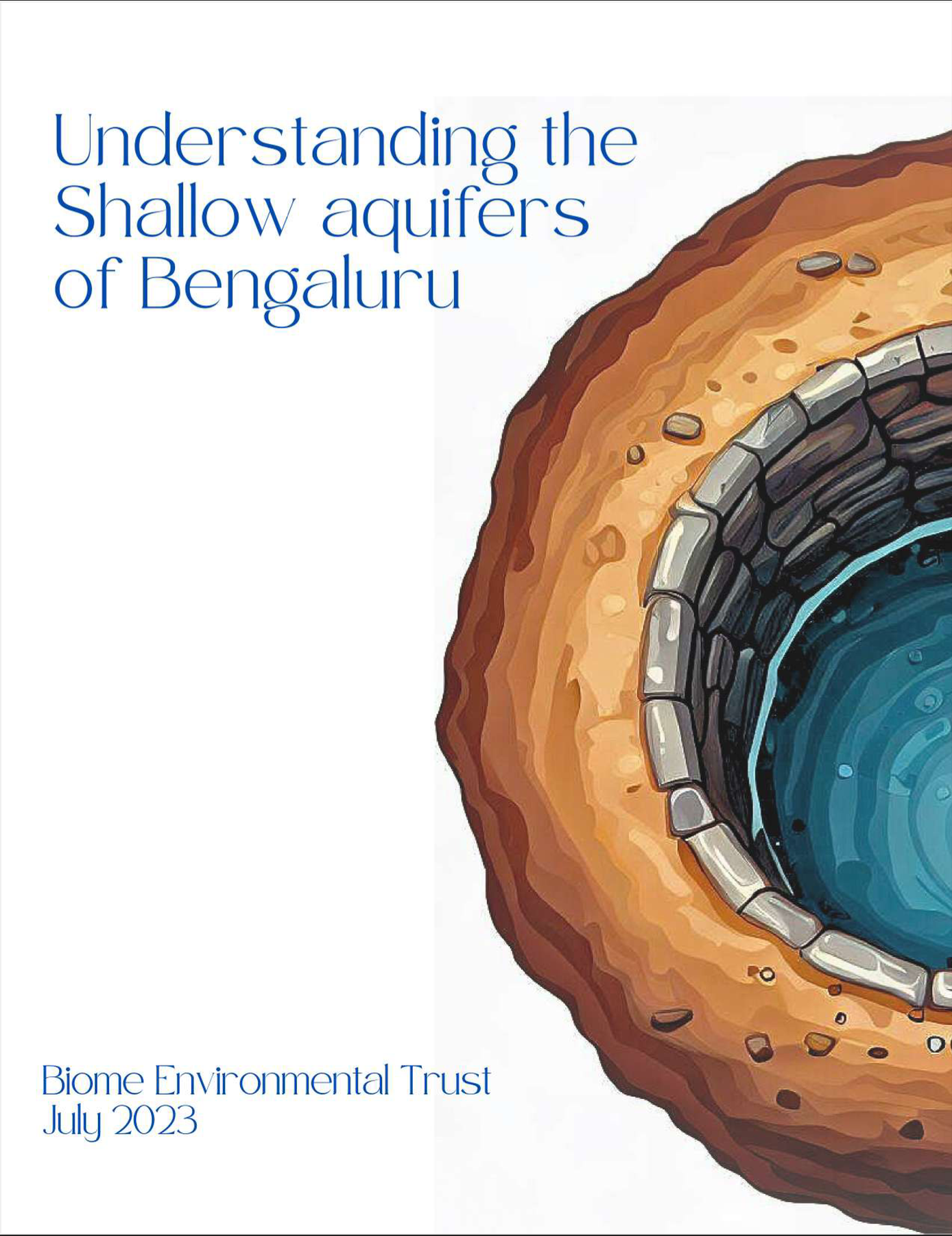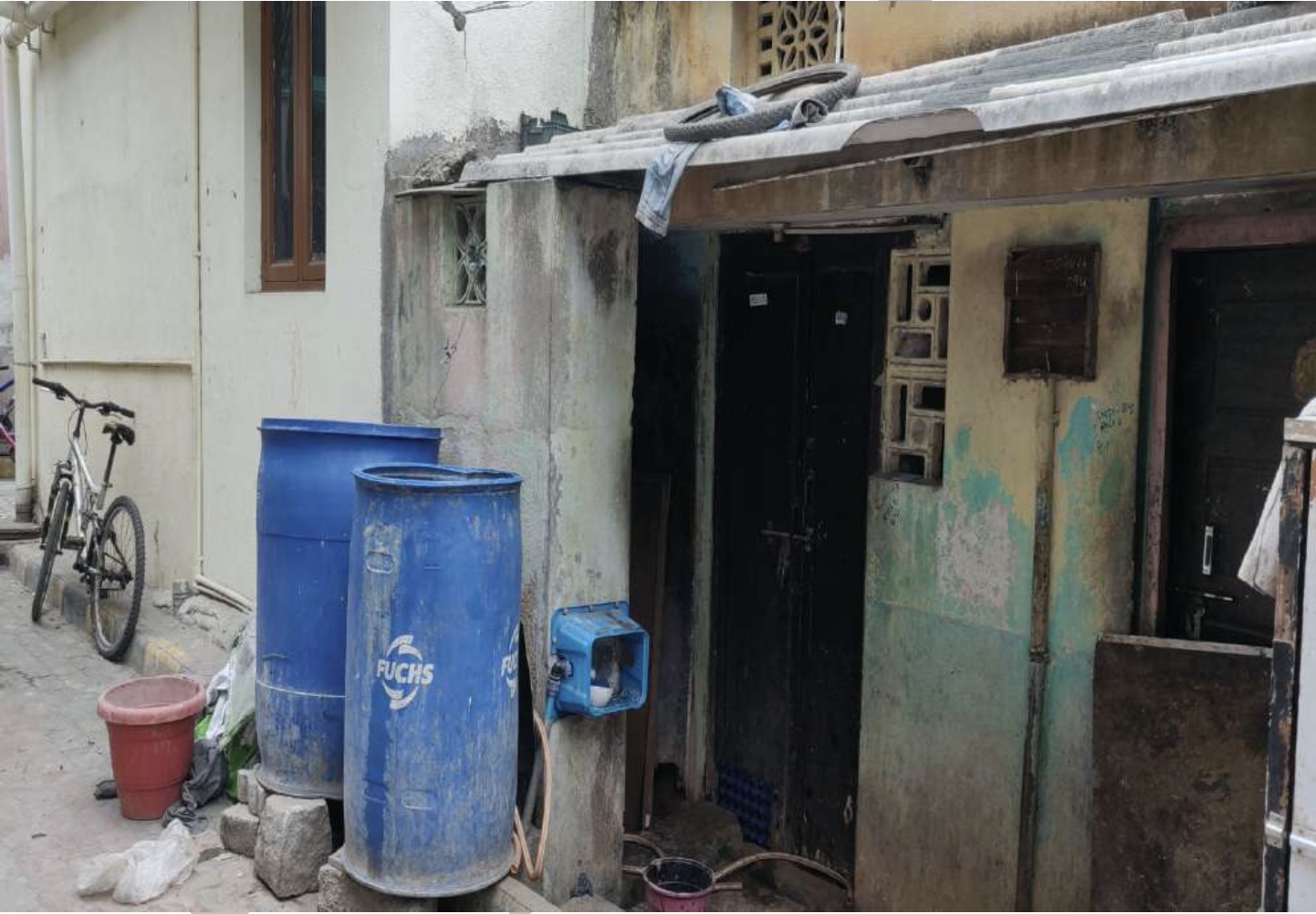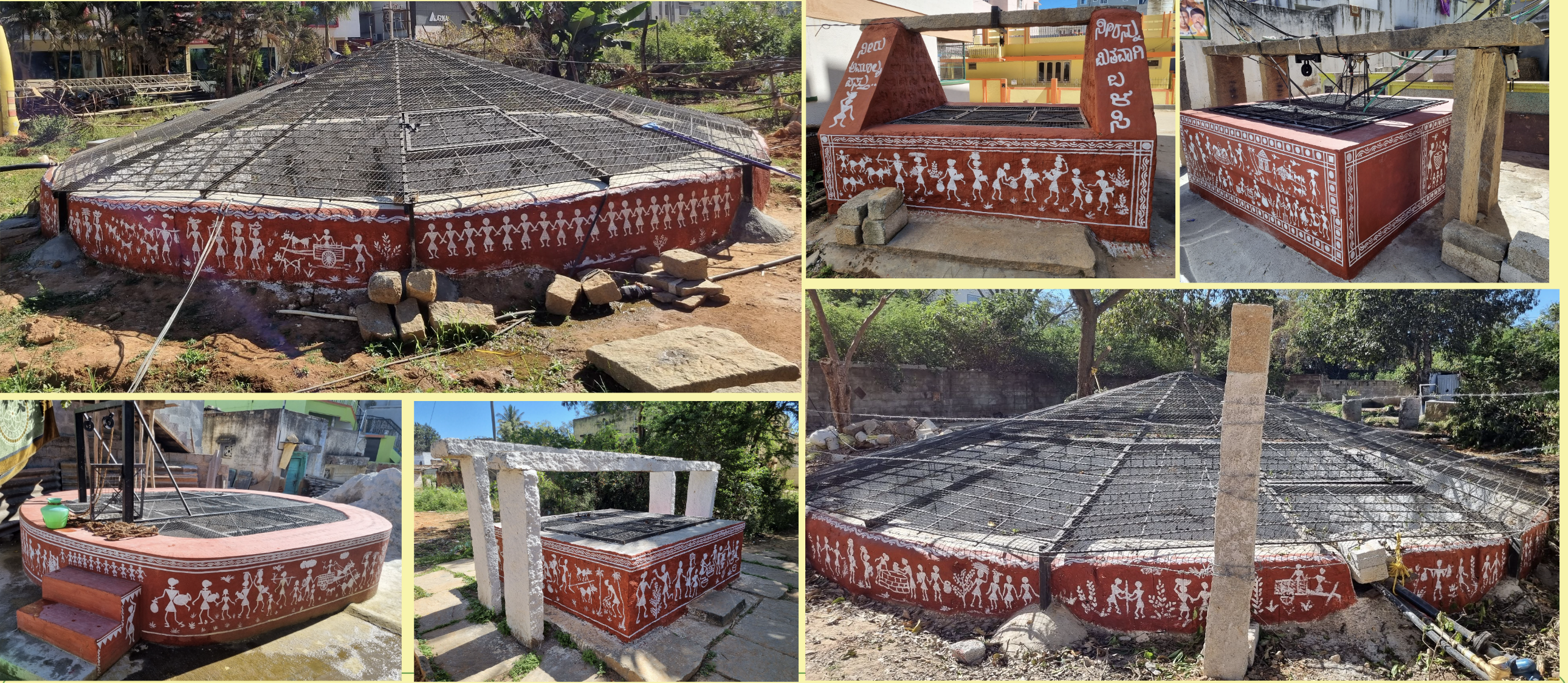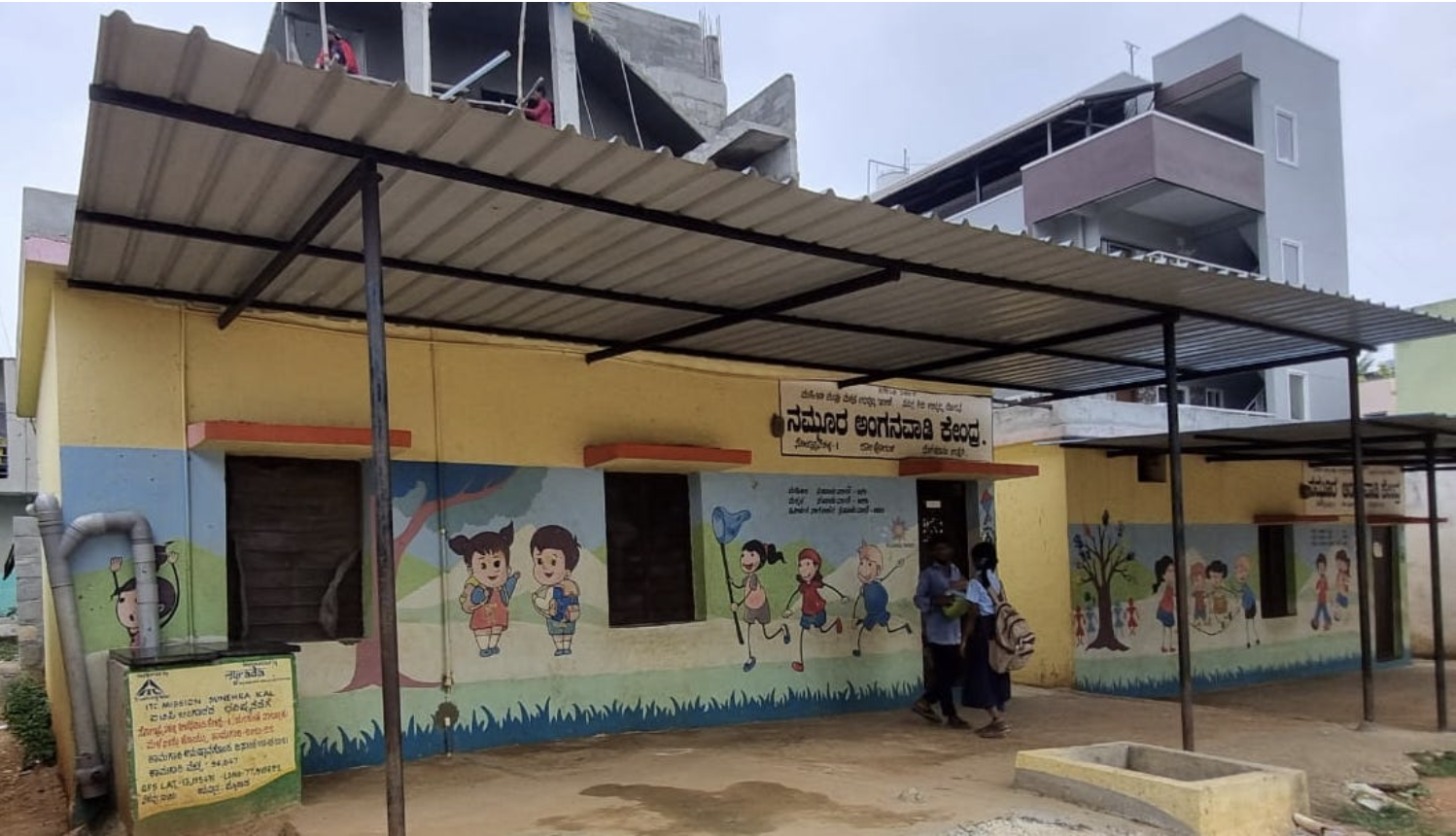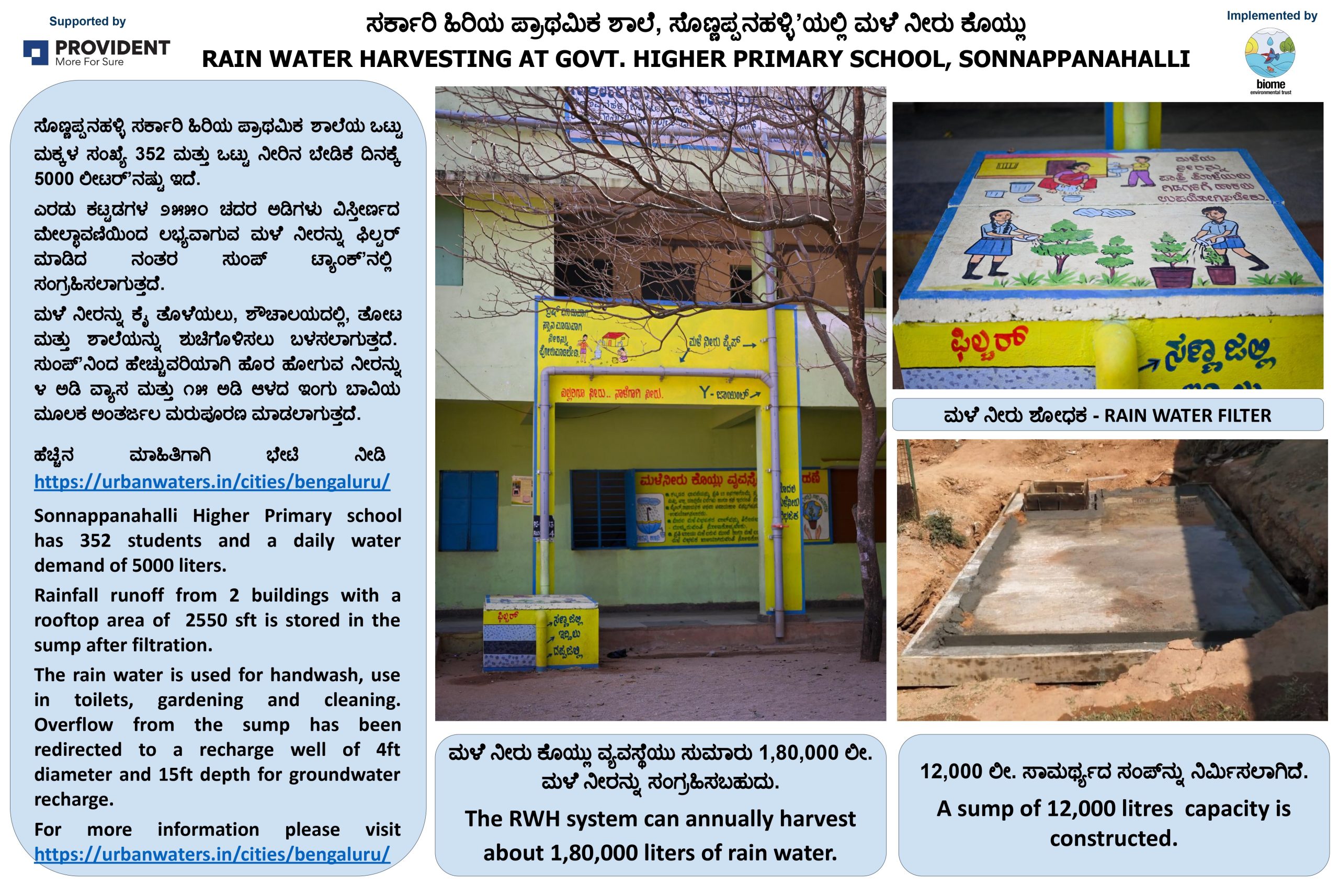Recharge well primer
Recharge Wells
Building water resilience and sustainable water management.
Biome Environmental Trust, Bengaluru.
This document has been made to be used as a community resource and is meant to evolve with the contributions and experiences of everyone. Please write to us with your contributions.
Please feel free to use, share and disseminate this document. We would appreciate being informed about how it has been used.
Please write to us at water@biome-solutions.com or find us on Facebook here.
This document is published under a CC BY–NC–SA 2.5 IN license.

Why we should dig recharge wells
- Surface water run-off typically seeps into the ground through natural cracks in the earth then into the aquifer.
- This natural percolation takes time, and only a small percentage of the surface water actually reaches the aquifer. (Surface water also contributes more to soil moisture than groundwater does, and some is lost to evapotranspiration).
- As long as the natural environment and habitat is preserved, this slow process is fine, but our urban spaces today are very built up, there’s runoff (and more flooding), and fewer spaces for the water to percolate through into the ground.
- Recharge wells help channel this run-off more effectively and more quickly into the aquifer.
- In the long run these wells could help us tide over the increasingly frequent drought periods
- In certain areas we have observed that water returns to the well over time
Why we should all dig recharge wells
- Also, it’s the law! If you live in Bengaluru within BBMP’s jurisdiction or have a BWSSB connection, you need to provide for a recharge well:
- If your property has a built up area exceeding 100m²/1100 ft² on sital area of 200m²/2150 ft² (BBMP) or a built up area of 1200 ft² and above on sital area of 2400 ft² and above (BWSSB) you need a recharge well of a minimum of 1m diametre and 6m depth (3 ft dia and 18 ft depth)
BBMP Bye Laws 2003 (Bye-law 32) and BWSSB Amendment Act (2009)

Will my recharge well directly benefit me?
Mr R.Balasubramaniyan lives in Vidyaranyapura. His 40’ deep well, dug in 1995, ran dry 2001. Unlike his neighbours, he didn’t fill his well up. One day, with a little help Bala sir spent around 5000 rupees and installed rainwater harvesting in his house. This recharge measure has brought back water to his open well and now he uses it exclusively without recourse to the city water network. Click on the image to watch the video.
click here: https://www.youtube.com/watc h?v=C4lwi–zUlZc


How do I dig a recharge well?
- You’ll need a plumber and a well-digger
- For residences, a 3’ x 20’ well would suffice for a 30’-40’ plot; 4’ by 30’ well for a 60’-40’ plot
- For a layout, plan for one 5’x30’ well for each acre of layout or 2-3 3’x20’ wells per acre.
- For homes, the overflow from the sump, or the stormwater drain, or the downpipes are connected to the well
- For community wells, the runoff from common areas which flows in stormwater drains is channelled into the well
Where should you locate your recharge well?
- For residences, place the recharge well as close to the borewell as you can and as far away from soak pits, toilets, or building foundations and basement
- For community wells, as close to storm water drains and borewells.
- Line your well with jelly stones to make it more sturdy
- Get help from an expert, particularly for siting and waterproofing
Digging an open well step by step

Here you can see how the rings of this well are reinforced with jelly

The overflow from the sump, or the stormwater drain, or the downpipes are connected to the well. Wells are also fitted with electric motors. They are covered with a safety grill, or an RCC slab with a manhole or peephole. This helps sunlight enter the open well, creates an access point for maintenance. It also helps us look inside the well and monitor water levels.
Here’s what one community recharge well looks like.
How much does it cost?
| Recommended well size | Cost Range (for well including slab) | Cost per ring (inc. digging, sumping, making rings, transport, installation) |
| 3ft x 20ft | Between25000 – 35000 rupees | 1250-1750 rupees (approx. 20 rings) |
| 4ft x 25ft | Between 45000 – 60000 rupees | 1800-2400 rupees (approx. 25 rings) |
| 5ft x 30ft | Between 88000 – 106000 rupees | 2500 – 3300 rupees (approx. 30 rings) |
| Other costs to think about | ||
| Safety grill for 2’x2’ grill manhole (openable) at 5’ depth from top level | For home and community recharge wells | Depending on the size of the well, between 4000-11000 rupees |
| Slab – 2’x2’ GI manhole cover and civil work | Depending on size of well, between 2000-4000 rupees | |
| Motor/Pulley | 3000-10000 rupees | |
| Plumbing costs for connections |
80-120 rupees for every running foot of 4” dia pipe and 4kg/cm2 pressure (with all fittings) |
|
| Drain / Civil Work | For community recharge wells | 3000-10000 rupees depending on the nature of the drain, filters, traps. |
| Indrain filters | ||
| Silt traps |
These are indicative costs, based on conversations with well diggers across the city. Actual costs may vary.
Some points to remember when digging an open well
The recharge well should be as far away from any soak or toilet pit and any building foundation and basement
Place the recharge well as close to any borewell
The soil should be excavated to a size about 4” larger than diameter of the well and reinforced concrete rings are laid into the hole.
The space between the rings and the soil should be packed with jelly or rocks measuring about 40 mm.
Connect your overflow from the sump, or storm water drain or downpipes to the well.
Don’t forget to place a concrete slab over the well, with an opening to look inside.
Slab design options
- Here are some slab design options:
- Keep safety paramount. None should fall into the well, so design appropriately.
- Cover the well with a solid RCC slab or a metal grill.
- You need to be able to look into the well to see how the water comes in, percolates out during or after a rainfall. You could keep a small 1” diameter peep hole or 1’x1’ chamber cover on top of the well.
- You may also want to keep a 2’ x 2’ manhole for maintenance and desilting.
Once you’ve dug your well
- You can self certify your well by submitting a letter with proof to your local BWSSB office
- Inform your BSWSSB officer when they come to check your water metre.
- Slowly over time your well may retain water. Do a pump test to see if your well has begun ‘yielding’. If yes, monitor at what times during the year your well yields, and you could begin using this water!
- Maintain your well by cleaning and desilting regularly – at least once every five years
Contact details of well diggers in Bengaluru
- A good time to dig wells is when the water table is low – the wells are easier to dig
- Here’s a list of well diggers in Bengaluru
- They can dig upto 40 ft
- Many of them have dug wells outside
Bengaluru as well, in places such as Ooty and Hyderabad. They understand the lay of the land, and are are willing to travel.
Some of them are now on WhatsApp and will send you pictures of their previous work
Contact details of well diggers in Bengaluru can be viewed here
Related Articles
- Bengaluru
- Wastewater
- Groundwater
- Rainwater
- Rainwater harvesting
- English
- Manuals / Guides
Resources for water conservation in...
Wipro Foundation supports sustainable urban water management in Indian cities, specifically focusing on Bengaluru, Pune, Chennai, and Hyderabad. The primary focus is on challenges...- Bengaluru
- Surface water
- Groundwater
- Rainwater
- Technical Paper
- Flood risk and mitigation
- Lakes
- Floods
- Rivers
- Seepage
- Rainwater harvesting
- Tanks
- English
Understanding the Shallow Aquifers of...
- Bengaluru
- Groundwater
- Water quality
- Technical Paper
- Water supply
- Floods
- English
Observations of Water Equity in...
- Bengaluru
- Case Studies
- Groundwater
- Integrated Urban Water Management
- Water supply
- English
Rejuvenation of six open wells...
Context Hunasamaranahalli is a small town located 22 kilometres from Bengaluru city and comes under Yelahanka taluk, Bengaluru Urban district of Karnataka. The Town Municipal...- Bengaluru
- Case Studies
- Groundwater
- Rainwater
- Integrated Urban Water Management
- Rainwater harvesting
- English
Rainwater harvesting at Govt Higher...
Basic information about the school Name of school Government Higher Primary School, Sonnappanahalli Contact information Mr Venkate Gowda (Headmaster) Number of students 360 Classes 1st...- Bengaluru
- Groundwater
- Rainwater
- Kannada
- Rainwater harvesting
- English
- Brochures/Posters


